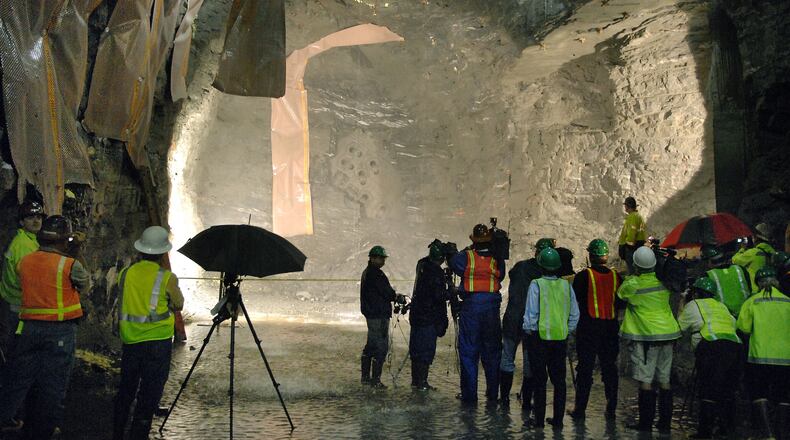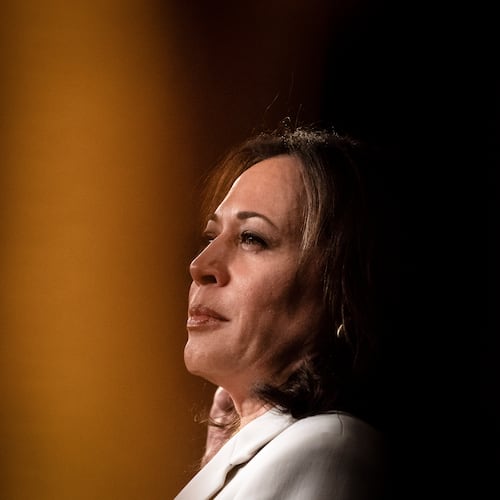We have an underground movement brewing in metro Atlanta. And we're not talking about covert resistance to the current occupant of the White House.
This is about transportation, and what Casey Cagle and Mary Norwood have in common, aside from their positions as the presumed frontrunners in two different political contests.
Each has broached the same germ of an idea: Metro Atlanta’s path to salvation from traffic congestion might lie within the granite conveniently placed beneath our feet. Tunneling, in other words.
Last weekend, Cagle was in a scrum of reporters following his formal entry into the 2018 Republican race for governor. The topic was congestion.
“We’ll be willing to go under, and also over if that is required,” the lieutenant governor said. “We have to think outside the box, and we have to be willing to really stretch ourselves — because nobody wants to sit in traffic.”
Norwood, an at-large city councilwoman, incorporated the idea into her race for mayor of Atlanta back in January. “We’ve got great granite, and we can tunnel quickly,” she said last week. “Trying to buy out communities – we really understand that that’s not in our best interests. We need to build out our infrastructure with the least amount of impact on our existing neighborhoods.”
Metro Atlanta sits atop three monadnocks – largely underground mountains formed from compressed lava. The most obvious, poking out, is Stone Mountain. Arabia and Panola are the others.
The geology is no secret. And big digs for the sake of MARTA and sewage have been successful. The city of Atlanta has a 400-foot, custom-made boring machine named Driller Mike, after the rapper, that is now cutting a fresh-water tunnel between the old Bellwood granite quarry and a water treatment plant.
Tunneling as a solution to traffic congestion would be a new step. But trendy.
Only last week, at a TED conference, mega-entrepreneur Elon Musk, founder of both SpaceX and Tesla, explained his new company and hobby: The Boring Company. As a solution to traffic congestion.
“The deepest mines are much deeper than the tallest buildings are tall, so you can alleviate any arbitrary level of urban congestion with a 3-D tunnel network. This is a very important point,” Musk said.
Musk’s futuristic version of tunneling, in which cars are placed on “skates” and zip underground at high speeds, might be a tad less practical than what Norwood or Cagle have in mind.
Norwood’s approach falls in line with the councilwoman’s emphasis on neighborhood preservation. Where practical, light rail and other forms of mass transit are the way to go, she said.
But Norwood has lived on Habersham Road in Buckhead for 35 years. “I have neighborhoods being suffocated by commuter traffic, and not just because of the (I-85) bridge,” she said. Vehicle after vehicle peels off I-75, coming in from Cobb County and headed for Buckhead or Midtown.
Putting a rail line above ground would be the equivalent of razing the village to save it. And the cost of real estate would be prohibitive. A MARTA rail line that begins somewhere in the northwest, dives 300 feet down then connects to the Lindbergh Station in Buckhead would give Atlanta a second transportation hub, she said.
“The tunneling technology they’re using now in New York City is $19,000 per foot. The prices have really come down from what we were looking at in our big storm water-and-sewer fix,” Norwood said. “I believe we would have a very quick return on investment if we do a tunnel.”
Norwood also said she’s interested in going underground to give the Downtown Connector some relief. And it is here that her thinking overlaps with that of Cagle.
When I phoned Cagle’s campaign staff and asked if the candidate would be willing to elaborate on his willingness to “go under” metro Atlanta’s streetscape, the lieutenant governor sent word that I should give the state Department of Transportation a call.
I was rewarded with the executive summary of a little-known, 2010 study of the cost benefits of constructing a tolled traffic tunnel that would begin at the intersection of Ga. 400 and I-85 (close to the current bridge collapse) and end at the intersection of I-675 and I-285. The idea was dubbed the Atlanta North-South Tunnel. Construction would take an estimated six years. Read it yourself here.
“One of the most fortuitous findings in this analysis was that no physical constraints exist along the proposed alignment that would preclude construction of a tunnel,” the study said at one point – though at another, writers acknowledged that the scope of the project would be “unprecedented.”
But here’s the selling point: “Over the 75-year period between 2023 and 2097, the tunnel provides cumulative (traffic) delay savings of over 2.8 billion hours.”
The study was handed in seven years ago. But that’s not the end of the story. DOT spokesman Scott Higley told me that engineers have dusted the paper off, and are updating it. An Atlanta North-South Tunnel 2.0 study should be finished by 2019.
And would certainly land on the desks of the next governor and the next mayor of Atlanta.
About the Author
The Latest
Featured



